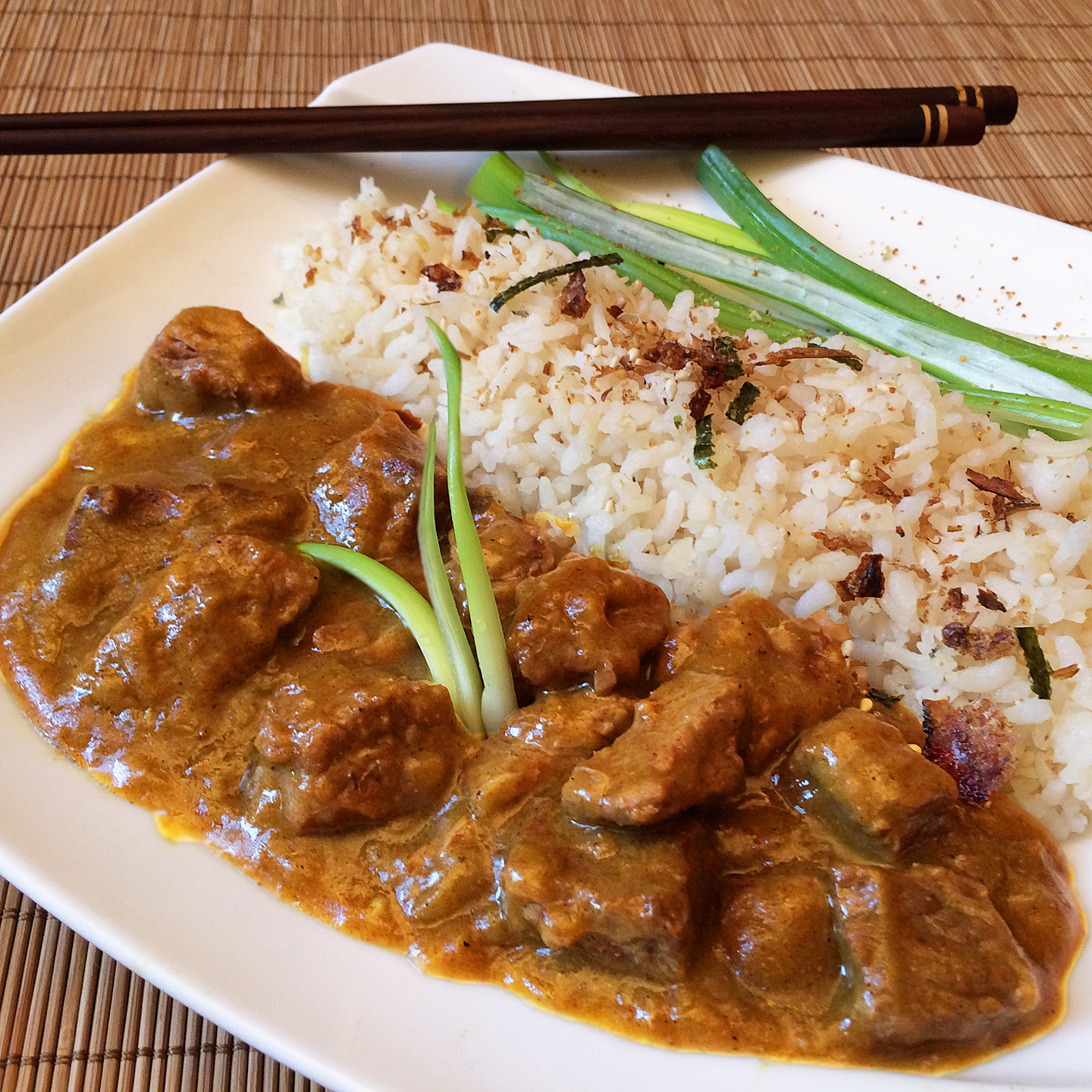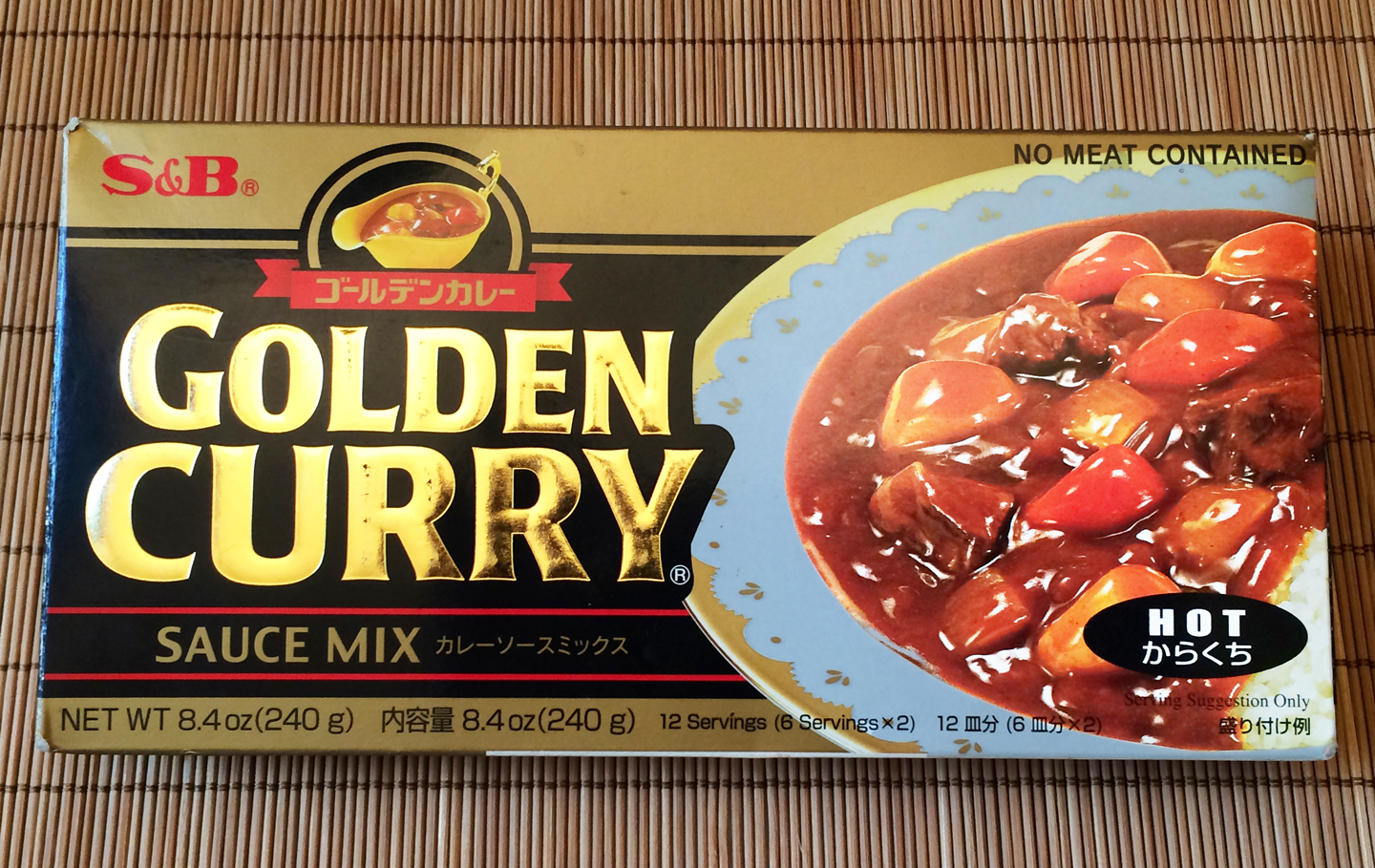👨🍳 Cooking in the Time of COVID 👨🍳
It’s been a minute since I posted any homemade Japanese food but since I cooked up this Japanese curry and it wasn’t bad, I thought I’d share. Actually, the word “homemade” might be something of a stretch: the sauce comes from a package, specifically the quick ‘n’ easy, rather ubiquitous S&B Golden Curry Sauce Mix, the hot variety – and for “hot”, read medium.
(Click on any image to view it in high resolution.)

Yes, Japanese curry is a thing; as a matter of fact it’s considered to be one of the country’s top two national dishes (the other being ramen) which are only then followed by sushi and miso soup. From The Japan Times: “The spice mix known as curry powder and curried dishes were most likely introduced to Japan via the Anglo-Indian officers of the royal Navy and other stalwarts of the British Empire. They were among the first Westerners the Japanese came into contact with, after Commodore Matthew Perry landed his Black Ships at Kurihama in 1853, opening the country to the world after hundreds of years of isolation. Since this new dish came from the West, as far as these Japanese travelers were concerned, it was classified as yōshoku (Western food)….”

After years of tinkering with flavor profiles and targeting them to local tastes, Japanese curry came of age, a countrywide comfort food that exhibits little similarity to the Anglo-Indian dishes that gave rise to it. Inside the box, you’ll find blocks of curry sauce mix, essentially an instant roux packed with all the typical flavorings. The instructions couldn’t be simpler: stir-fry chunks of your protein of choice (I used beef) along with some vegetables (onion, carrot, etc.) in oil for 5 minutes, add water, bring to a boil, and simmer for about 15 minutes.
Now if you do any cooking at all, you will immediately recognize that there’s no way red meat is going to tenderize during that meager interval, so put your optimism back in the pantry, take out your patience, and let the dish simmer covered for a good deal more time until the meat is actually tender. Then turn the heat off, break the curry-roux bricks into pieces, add them to the skillet, and stir until the sauce mix has dissolved completely. Simmer and stir for another 5 minutes or so.
I kicked up mine with some yuzu shichimi togarashi (seven spice mixture) that includes dried yuzu peel and red chili pepper and topped the rice with furikake. Raw scallion is a good foil for cooked beef and more important, I had some on hand, so why not?
Stay safe, be well, and eat whatever it takes. ❤️

Hi Rich, cool that you are cooking Japanese curry! My personal favorite is Java, though as you indicate “hot” is anything but. Enjoy the holiday weekend and hope to see you soon 😀
Stacy! Great to hear from you! Hope to see you soon as well!
You just made me hungry – I even love the aroma of curry !
Just doing my job.
I was glad to see this post as I’ve been a huge Japanese curry fan for years, having discovered it when traveling in Japan. These days I make it at home with the S&B sauce quite often, with chicken cutlets as my protein of choice (in Japan the most common proteins are cutlets, either chicken or pork). Another great variation I discovered on one of my trips was substituting Udon noodles for the rice, which is actually a big improvement. You should try it! For a really good restaurant version go to Curry Ya on East 10th St.
Glenn – Yes, katsu would be perfect in this and I love the idea of using udon noodles in place of rice!
I like your suggestions for spicing up the curry. We also keep some Japanese pickles on hand to top the curry — slightly sweet fukujinzuke or the red ginger, benishoga. Funny thing, in Japan, you’ll see curry offered as a breakfast option in highway rest stops, train stations, and airports.
Hey Donna! Curry for breakfast – sounds like a plan! And I always have benishōga in the fridge; wish I had thought of using it with this! Next time!